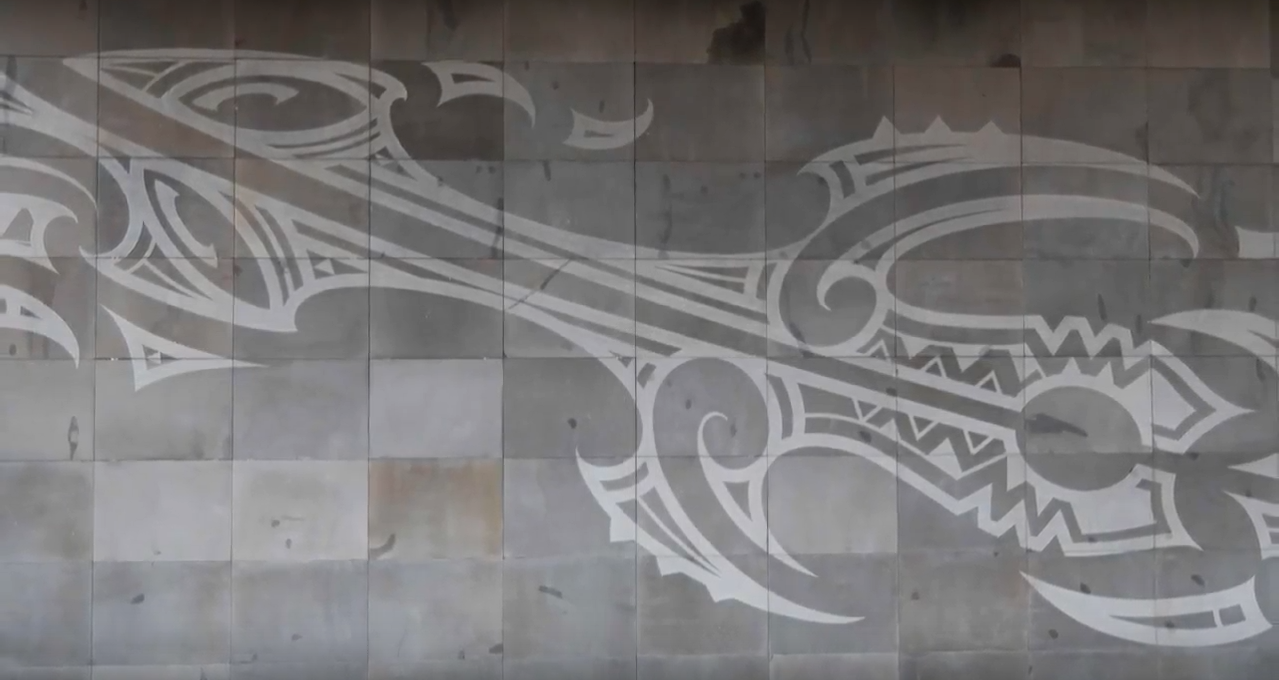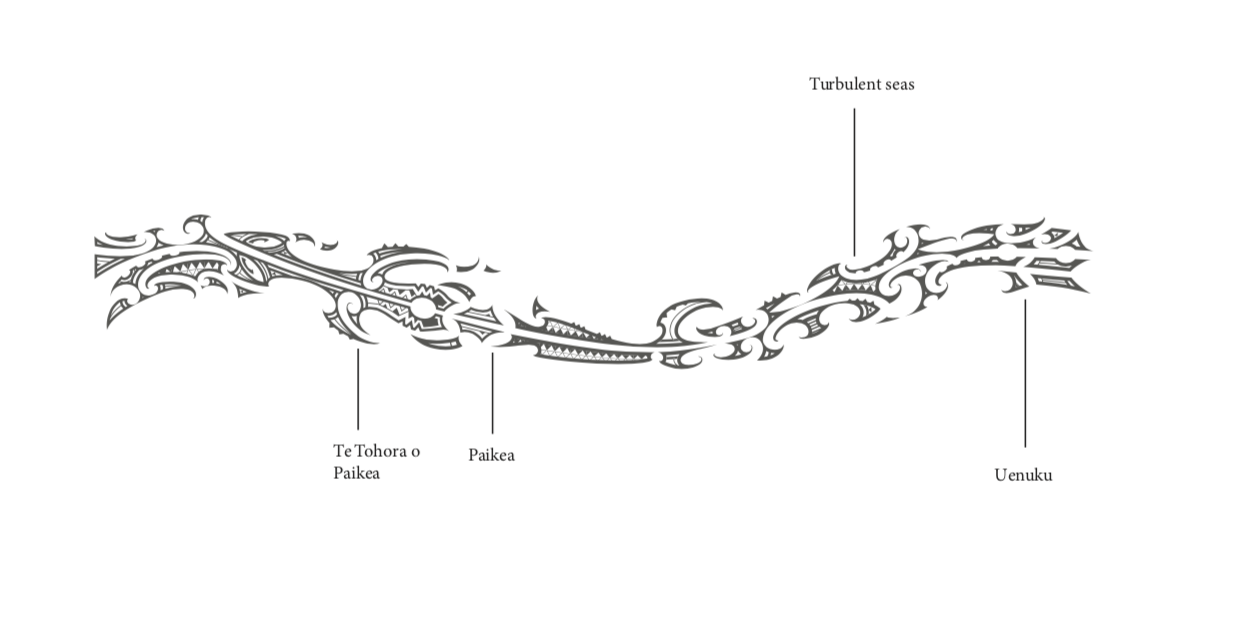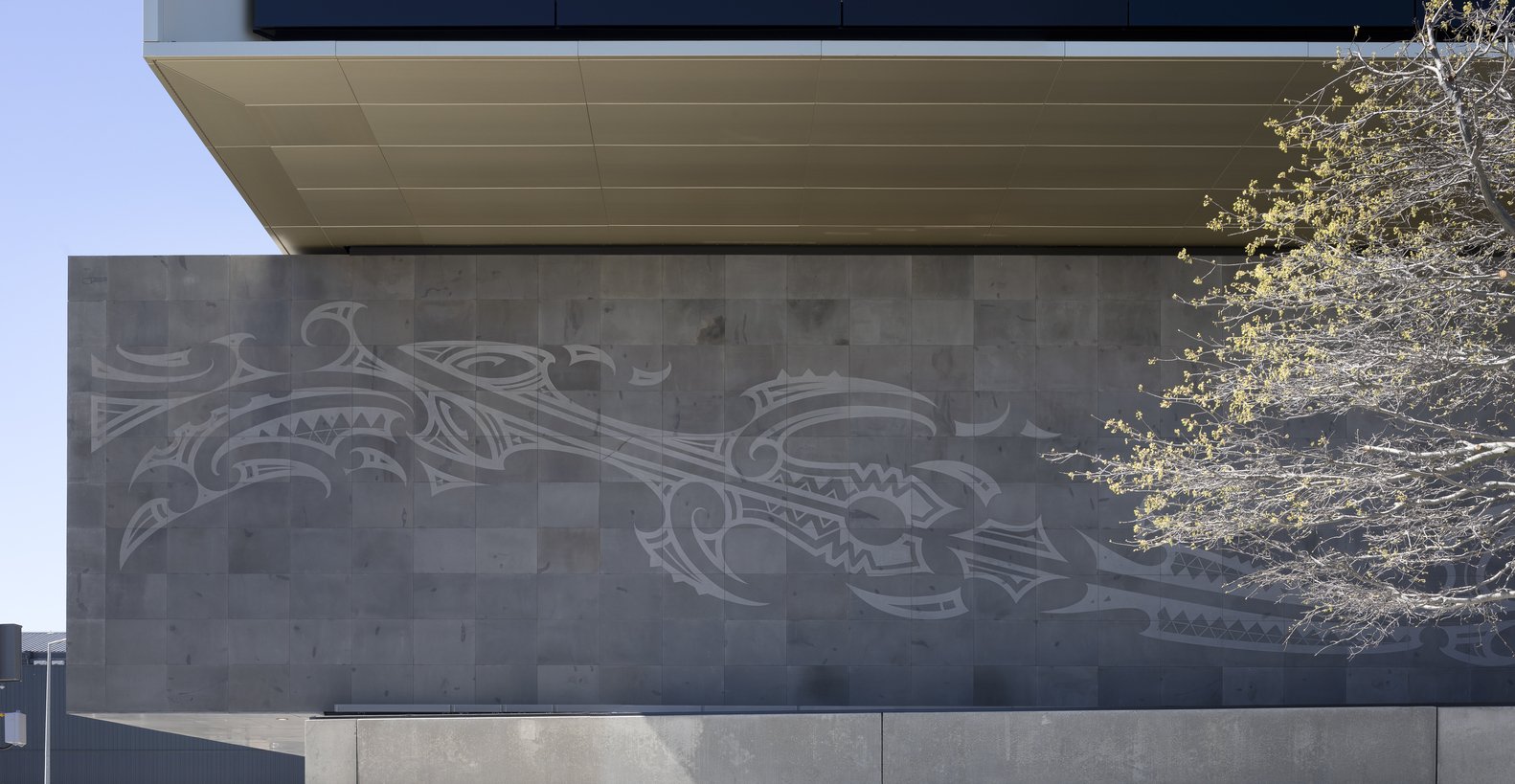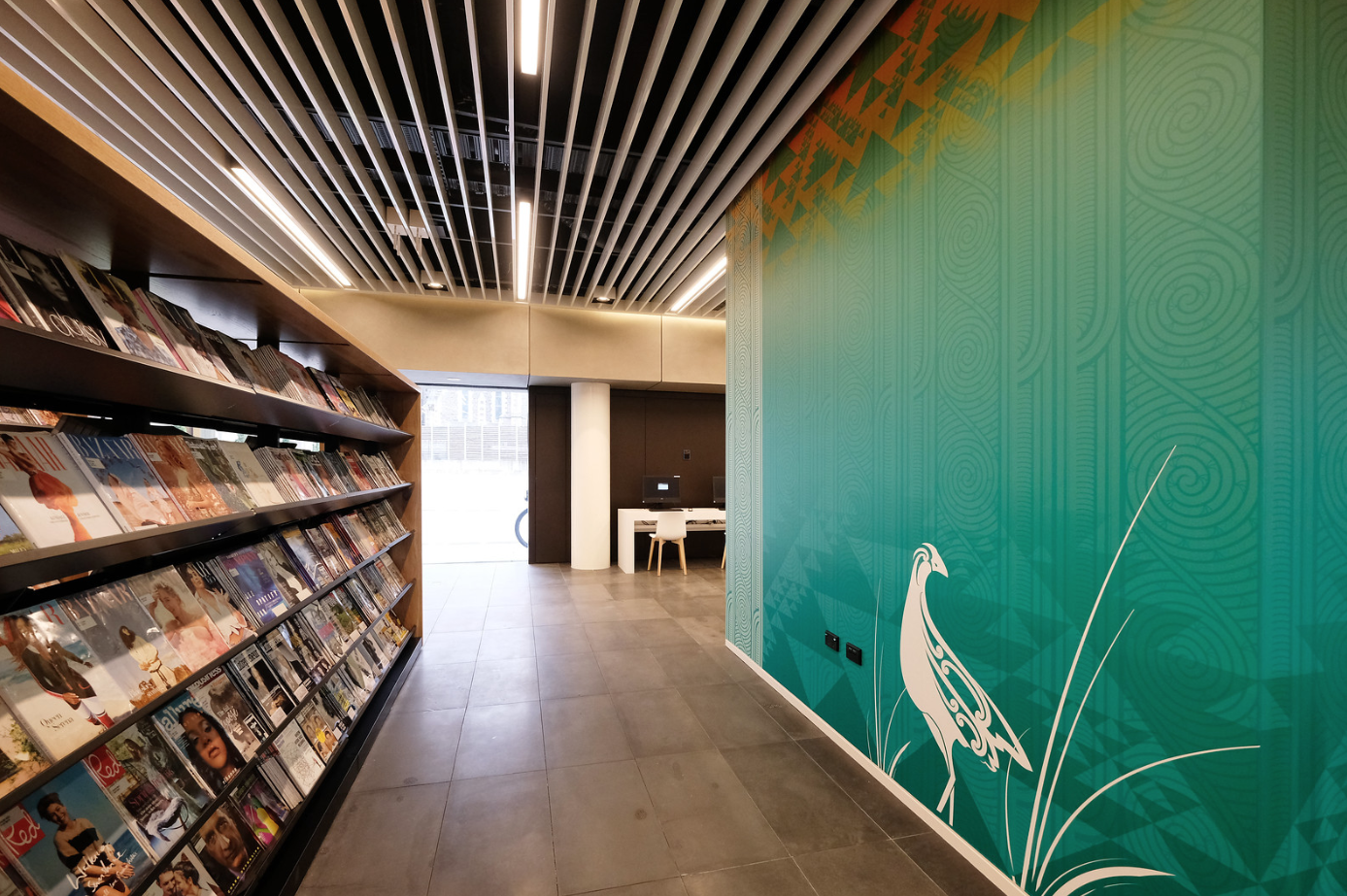Tūranga - Christchurch Central Library
Tūranga, the Christchurch Central Library, was designed as a unique bicultural space, where the history and narratives of mana whenua are woven into themes of ongoing development and the search for knowledge.
The name Tūranga was gifted by Te Ngāi Tūāhuriri Rūnanga, and the whare pukapuka invites visitors to experience a connected, community-focused ‘storehouse of knowledge’.
Kaitiaki Studios was proud to be involved in designing multiple artworks throughout Tūranga; we have a deep connection to the value Tūranga places on storytelling and creative exploration. The artworks share traditional narratives through contemporary design and add a rich and dynamic layer to the library experience.
The artworks throughout the space were developed in collaboration with Matapopore Charitable Trust and integrate Ngāi Tūāhuriri and Ngāi Tahu mana whenua traditions.
Read more about the artwork at Tūranga here.
‘Kākano Puananī’ - Airborne Seeds tells the Ngāi Tahu creation story in a series of panels.
The story begins with the union of Ranginui and his first wife, Pokoharuatepō, and the creation of their sons Aoraki, Rakiroa, Rakirua, and Rarakiroa (also known as Mt Cook, Mount Dampier, Mount Teichelmann, and Mount Tasman).
In the traditional narrative, Aoraki and his four brothers bring their waka down from the heavens to visit their stepmother, Papatūānuku - but as Aoraki recites the karakia for his journey home, he makes a mistake in his words. As a result, the waka runs aground on a rock, and Aoraki and his brothers are left stranded. As time passes, their hair turns white, and they turn to stone and become the maunga. Their overturned waka - commonly known as Ngā Tiritiri-o-te-Moana, the Southern Alps - is also depicted in this artwork.
Aoraki and his brothers are shown surrounded by kākano puananī; airborne seeds dispersed by Tāwhirimātea, the Māori wind deity.
This artwork was created collaboratively by Morgan Mathews-Hale of Kaitiaki Studios and Riki Manuel, with narrative by Matapopore Charitable Trust.

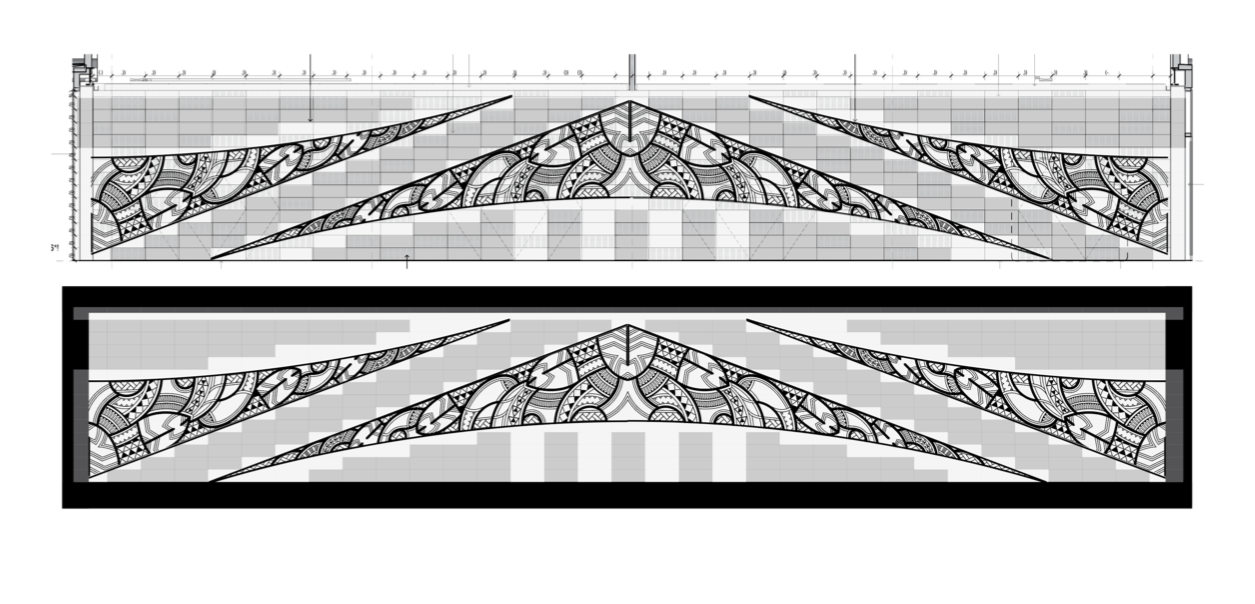
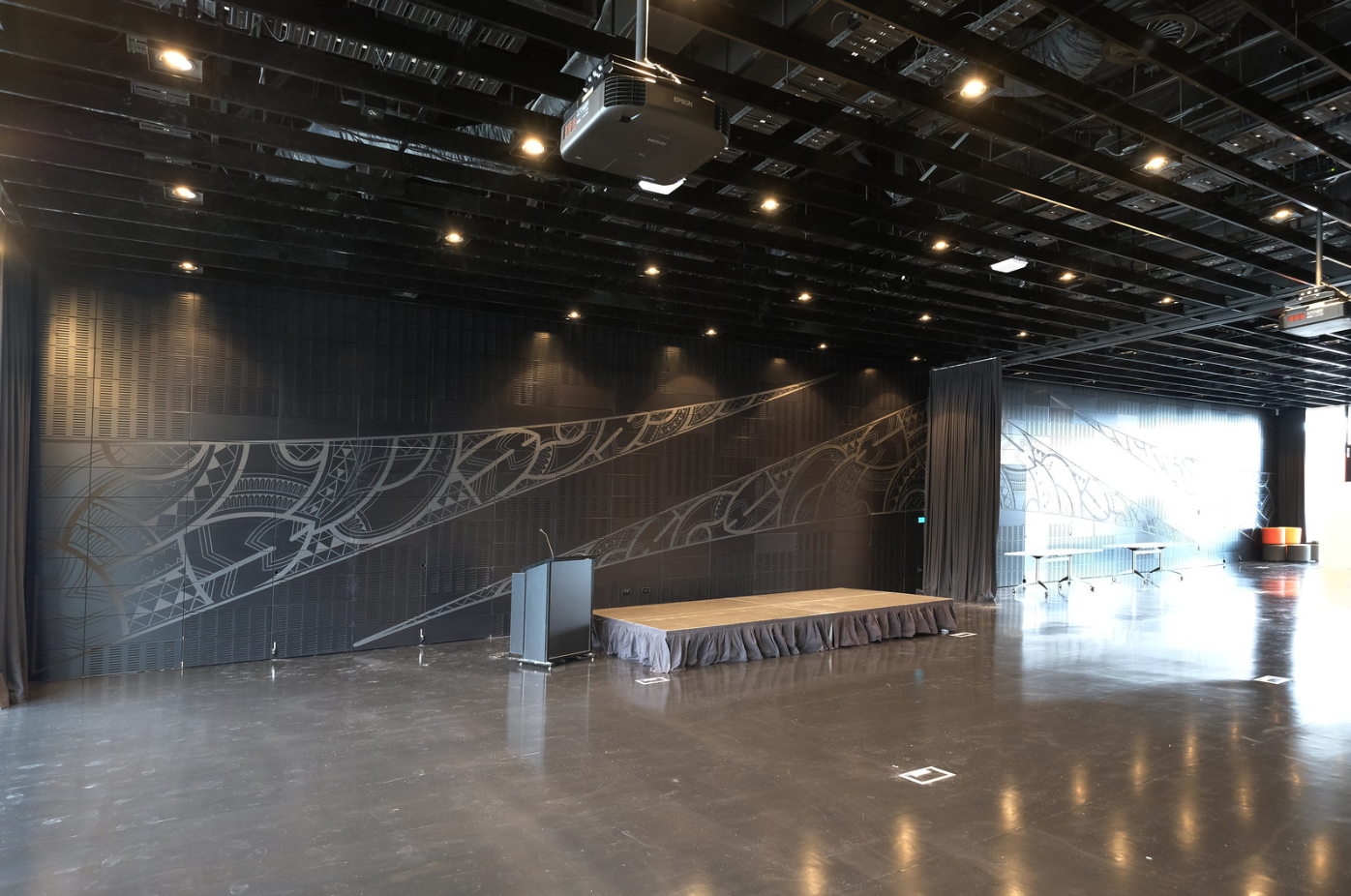

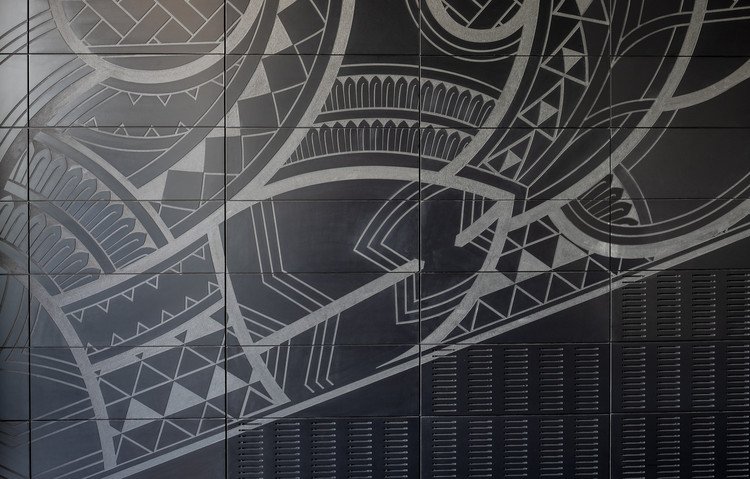
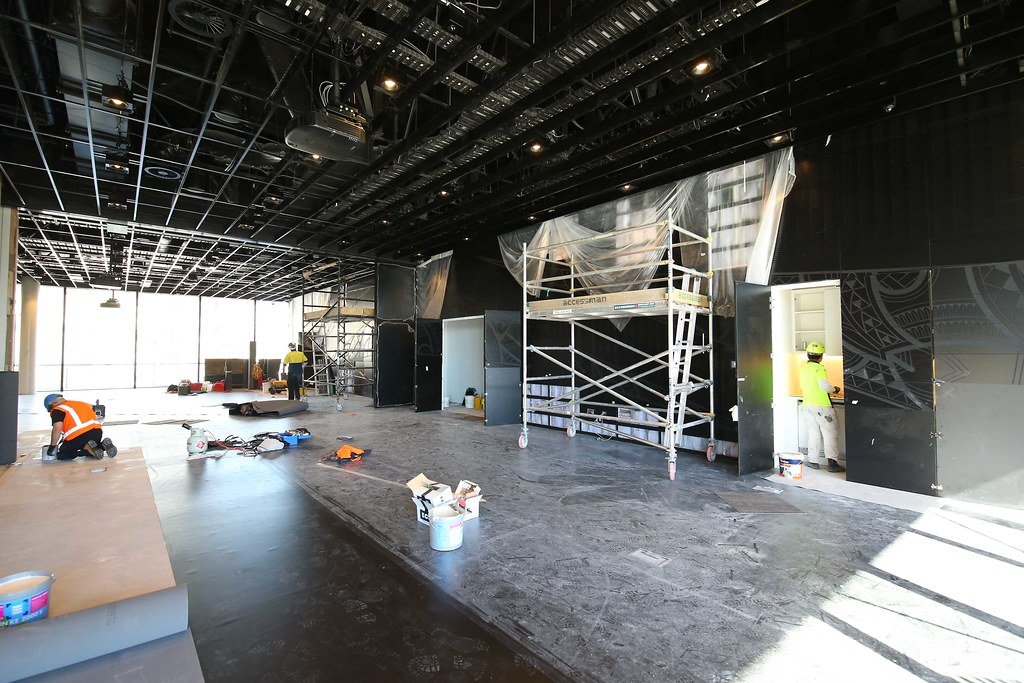
Mātauranga – The Ascent of Tāwhaki
This artwork depicts the Ngāi Tahu narrative of Tāwhaki’s journey through the heavens in his search to obtain knowledge. The narrative was chosen in collaboration with Matapopore Charitable Trust, and tells a story that aligns with Tūranga’s purpose.
The artwork is threaded through Tūranga, beginning in the ground-floor reception area and continuing through the building at each lift surround to mirror Tāwhaki’s ascent to the heavens.
The artwork begins with the Manu in the reception area; they are depicted at the beginning of their journey of discovery, inviting library users to continue on their own journey of knowledge. As the narrative progresses up through the building, the carving pattern pūngāwerewere appears at each level to represent the tukutuku pūngāwerewere (spiderweb) that Tāwhaki climbed.
Themes of connection, community, identity, discovery, and creativity are introduced, building on the narrative and emphasising the concepts that draw people to Tūranga. Each level features a different species of native bird with significance to the Waitaha region, from the Pākura on the ground floor to the Kūkupa on Level 4.
The bold colour schemes for each level were chosen to tie into the existing architectural design, and use colour to show the different stages of Tāwhaki’s journey.
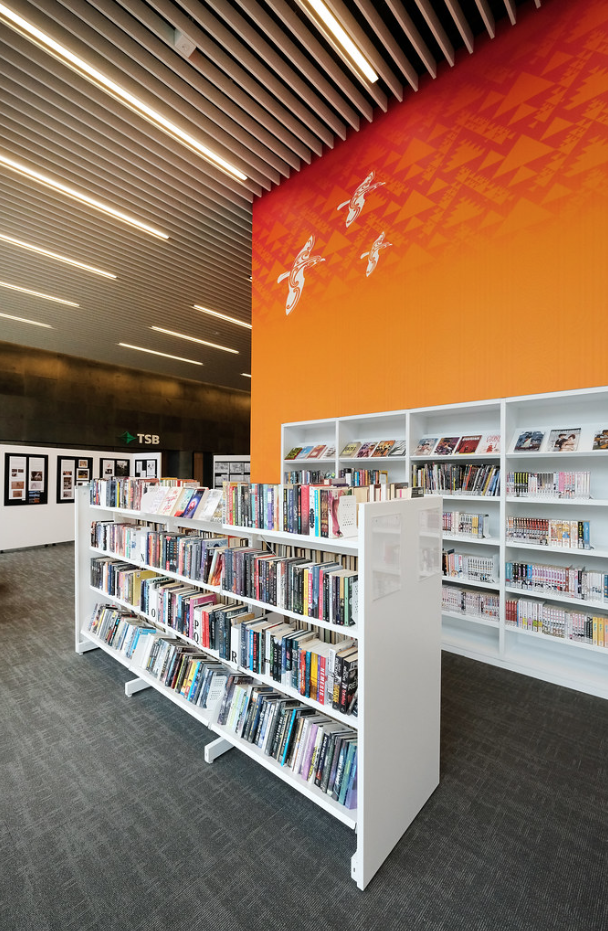
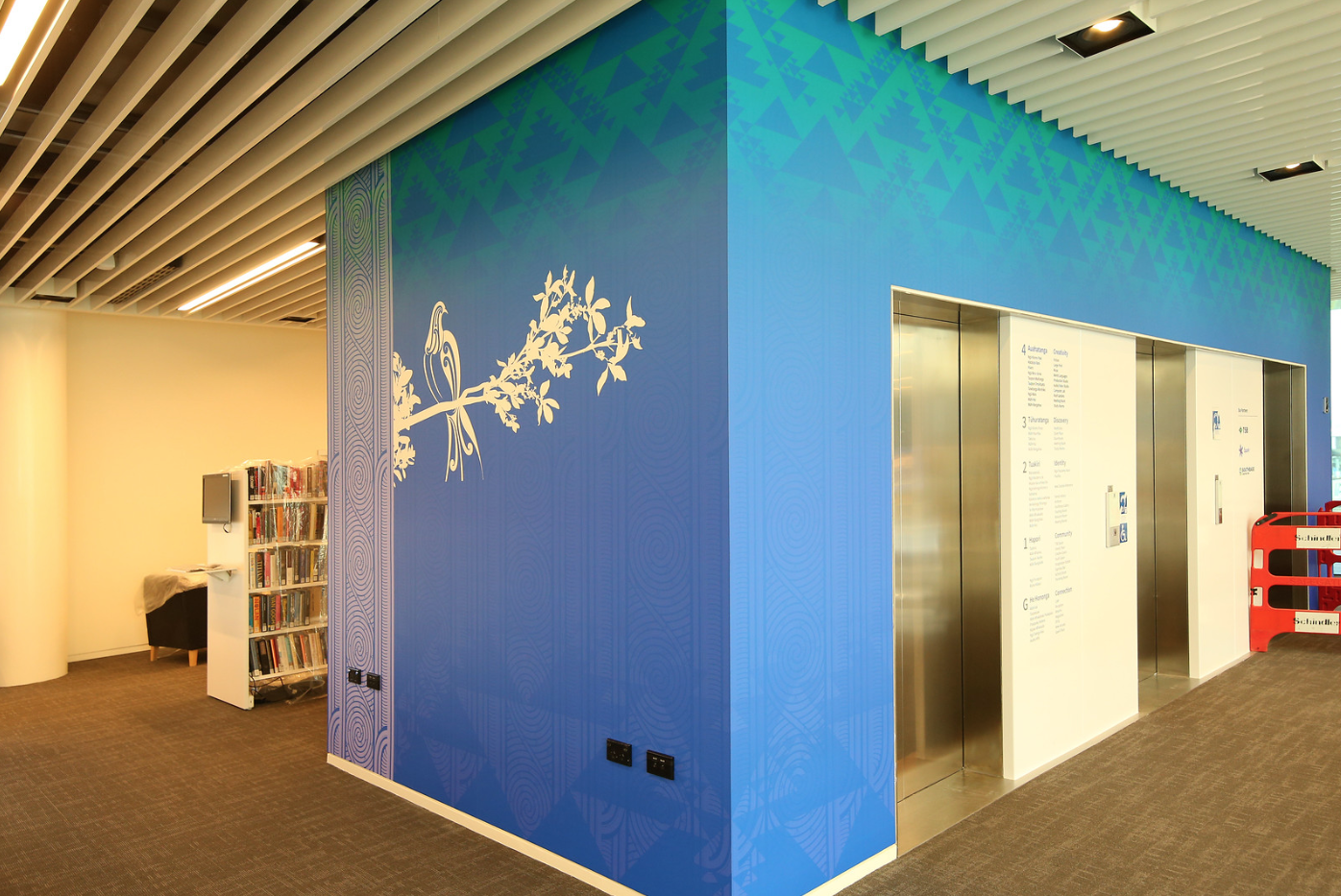
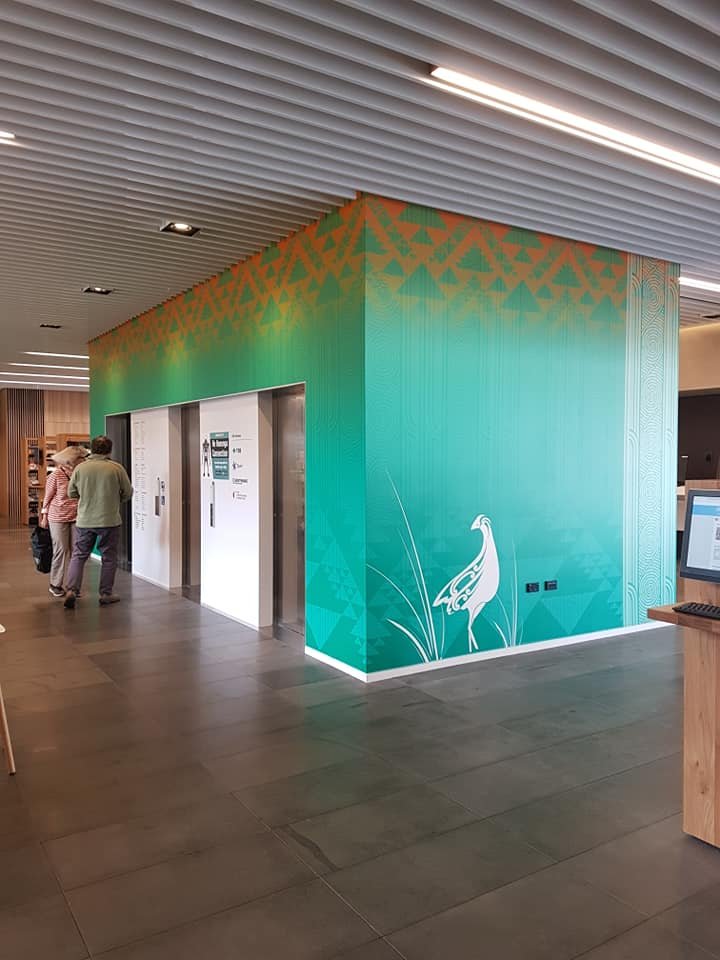
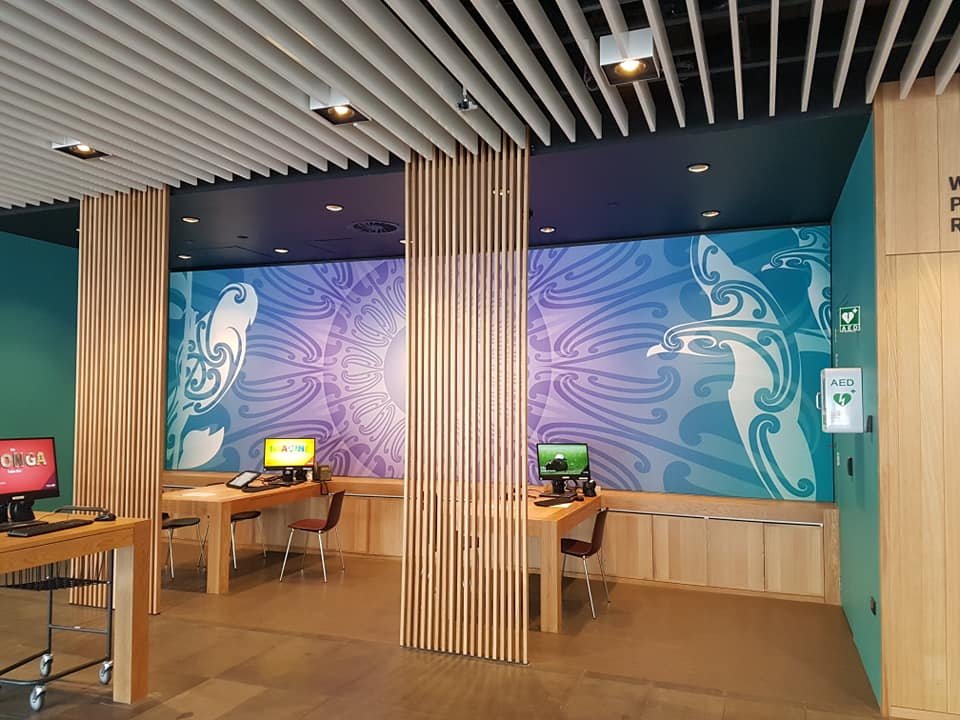
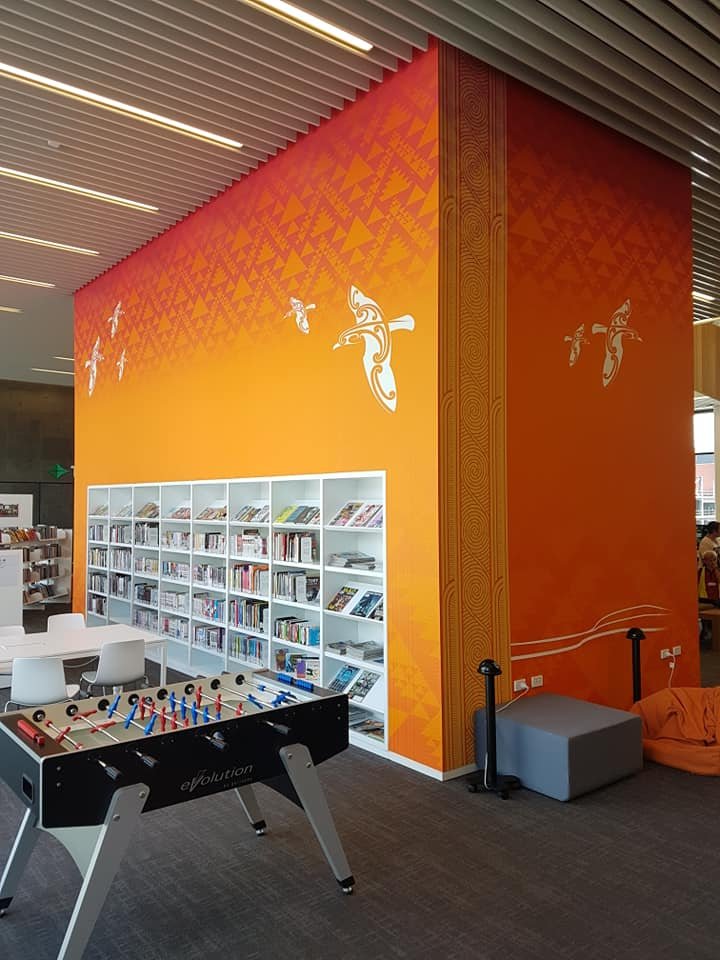
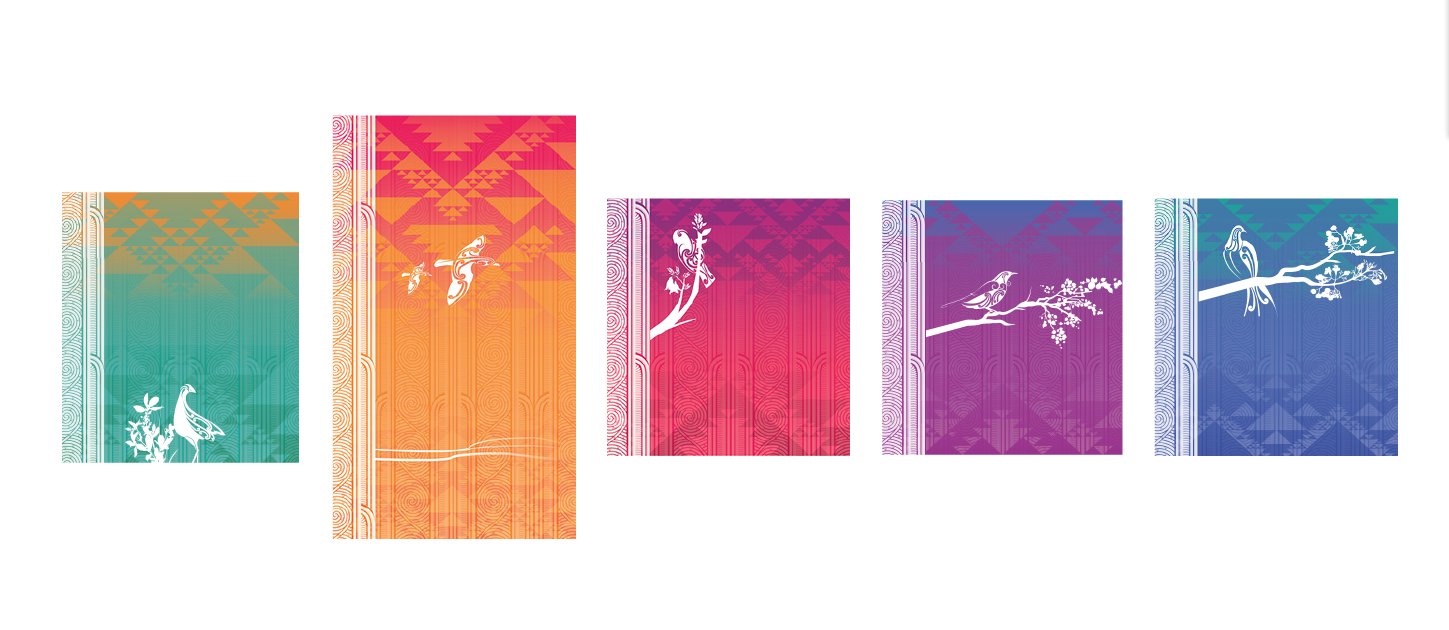
External Basalt Wall
The artwork on the external basalt wall celebrates Tūranga as a place of storytelling, connection, and ongoing learning. Morgan Mathews-Hale and Riki Manuel worked in close collaboration to develop a design that blended Riki’s experience in traditional Maori carving with Morgan’s digital and visual design skills.
The narrative was developed in collaboration with Matapopore Charitable Trust and was inspired by a waiata, E Tuku Ana. The waiata describes Ngāi Tahu and Ngāti Porou whakapapa and the voyaging of ancestors from Hawaiki in the Pacific to Te Waipounamu.
Viewed from above, the design shows Polynesian ancestor Paikea riding on the back of a whale (or taniwha), with whānau from Hawaiki bidding him farewell. Paikea is clinging onto the whale, surrounded by swirls of turbulent water and jagged shapes that symbolise the challenges that people encounter on their voyages.
This artwork acknowledges the migration and voyaging of previous generations while inviting visitors to reflect on their own journey and story. It captures the significance of Ngāi Tahu whakapapa and represents universal themes of discovery, growth, and overcoming obstacles to reach a final destination.
Riki Manuel described the artwork in the context of Tūranga’s purpose: “The building is a place where we all go to find knowledge, and that’s what this should reflect - it’s one story of many.”
The project had complex architectural requirements, and installation was completed by Art Fetiche and Project Management Architectus. The completed design was divided into numbered squares before being printed onto vinyl panels. The vinyl squares were then applied to 178 individual bluestone panels and sandblasted by hand, capturing a high level of detail on every tile.
It was a privilege to be involved in the creation of this artwork, and to be part of a project that will be experienced by our children and grandchildren.
